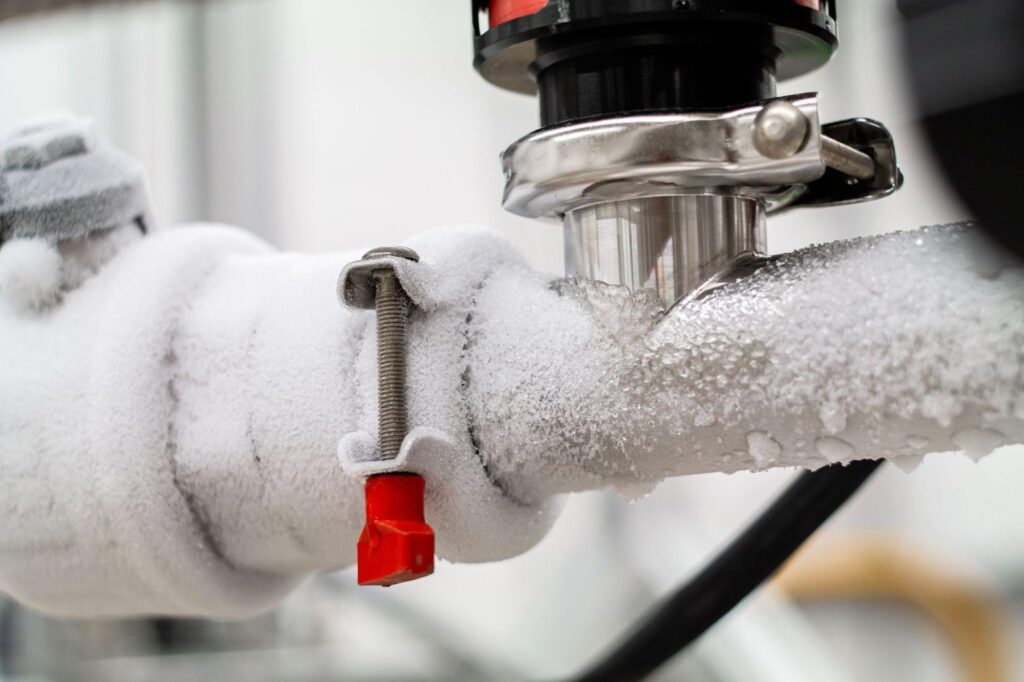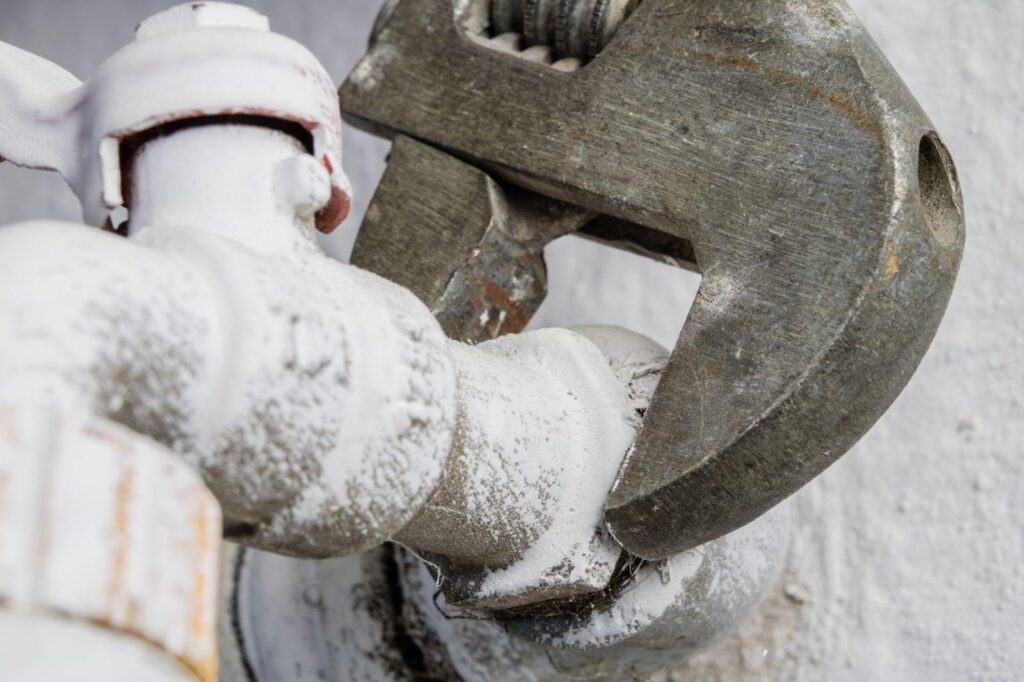Winterizing your home’s plumbing is a critical step for Canadian homeowners, especially in regions like Calgary where sub-zero temperatures can persist for weeks. Frozen pipes can expand and rupture, leading to significant water damage, mould growth, and costly repairs. Key preventive actions include insulating exposed piping, disconnecting and draining outdoor hoses, sealing drafts near plumbing lines, and maintaining a consistent indoor temperature – even when you’re away. Taking these steps in early to mid-fall can help you avoid emergencies and keep your plumbing system functioning smoothly all winter long.
Table of Contents
- How to Winterize Your Home’s Pipes and Outdoor Faucets
- Advanced Freeze Protection Strategies
- What to Do If Pipes Freeze (Before It’s Too Late)
Calgary’s winters are no joke. With Arctic air masses regularly driving temperatures below –20°C – and wind chills that feel far colder – your home’s plumbing is under constant threat. Water expands when it freezes, and that pressure can crack copper, PVC, or even PEX lines, often in hidden areas like walls or crawl spaces. By the time you notice a leak, the damage may already be extensive.
Outdoor faucets are among the first components to fail if not properly winterized. A simple oversight – like leaving a garden hose attached – can trap water in the spigot line, leading to a freeze that travels inward and compromises your entire system. Many homeowners only realize the importance of preparation after facing a midnight crisis that demands immediate pipe leak repair or even full pipe replacement. That’s why proactive care is so valuable. For those looking to assess their system’s readiness, resources like home plumbing repair in Calgary can offer practical guidance without the pressure of a sales pitch – just straightforward advice to help you stay ahead of the freeze.
How to Winterize Your Home’s Pipes and Outdoor Faucets
Winterizing isn’t just about tossing a cover over your AC unit – it’s a targeted effort to shield your plumbing from ice’s destructive force. In Calgary, where a sudden cold snap can hit in October, timing matters. Aim to complete these steps by mid-October to stay ahead of the first hard freeze.
Start with your outdoor faucets. Standard hose bibbs are prone to freezing because the valve sits right behind the spigot, exposed to outdoor air. Even if you’ve turned off the interior shut-off valve, residual water can remain trapped. To fully winterize:
- Turn off the indoor supply valve (usually in your basement or utility room).
- Open the outdoor faucet to drain any standing water.
- Remove and store your garden hose – never leave it attached.
- Install an insulated faucet cover for added protection, especially on older homes.
Next, inspect pipes in unheated zones – garages, basements, attics, and crawl spaces. Use pre-slit foam insulation sleeves (rated for sub-zero temps) to wrap all exposed copper or PVC lines. For pipes along exterior walls, consider adding heat tape with a built-in thermostat; it activates only when temperatures dip near freezing, saving energy while preventing ice buildup.
Don’t overlook air leaks. Cold drafts from foundation cracks, utility penetrations, or poorly sealed windows can chill nearby pipes. Use expanding foam for larger gaps and acrylic caulk for smaller ones – both widely available at Canadian hardware stores. Even a 2°C drop in localized pipe temperature can tip the scale toward freezing during a prolonged cold spell.
Finally, maintain consistent indoor heat. If you’re heading south for winter, resist the urge to lower the thermostat below 13°C. Better yet, invest in a smart thermostat that sends alerts if temperatures fall unexpectedly. Open cabinet doors under kitchen and bathroom sinks on exterior walls to let warm air circulate – this simple habit has saved countless homeowners from waking up to a flooded basement.
For older properties or homes with a history of plumbing issues, consider scheduling a whole-home plumbing inspection before winter sets in. A professional assessment can reveal hidden vulnerabilities – like corroded joints, outdated materials, or inadequate insulation – that aren’t visible to the untrained eye. Catching these early means fewer surprises when the mercury plummets.
Advanced Freeze Protection Strategies

While basic winterization covers most homes, Calgary’s extreme cold calls for extra layers of defense – especially in older builds, heritage properties, or homes with previous residential plumbing vulnerabilities. These advanced tactics go beyond insulation and thermostat settings to create a more resilient system.
Smart monitoring is your first line of defense. Modern leak detection systems can spot moisture or temperature anomalies long before a burst pipe floods your basement. Pair a Wi-Fi-enabled water sensor (placed near sump pits, water heaters, or under sinks on exterior walls) with a smart shutoff valve. Some models automatically cut the main water supply within seconds of detecting a leak – potentially saving thousands in damage.
Don’t forget your sump pump discharge line. A frozen discharge pipe is a common but overlooked winter hazard. Ensure the line extends at least two metres from your foundation and slopes downward without kinks. Insulate any above-ground sections with foam tubing, and consider installing a secondary battery backup in case of power outages during snowstorms – common during Alberta’s winter blizzards.
Know your home’s weak points. If your house was built before 2000, it may contain materials more prone to freeze damage, such as galvanized steel or early-generation plastic piping. Homes that have undergone additions or renovations might also have plumbing runs in poorly insulated chases or unheated additions. In these cases, a thermal imaging scan during a routine check can reveal cold spots invisible to the naked eye.
Prepare for the worst-case scenario. Even with precautions, pipes can freeze during prolonged cold snaps – especially if you’re away. Create a winter emergency plan:
- Label your main water shut-off valve clearly and ensure all adults in the home know how to operate it.
- Keep a hair dryer and space heater accessible (but never use open flames to thaw pipes).
- Save the contact of a reliable emergency plumber in your phone – ideally one who offers 24/7 service during winter months.
What to Do If Pipes Freeze (Before It’s Too Late)
Discovering a frozen pipe doesn’t have to mean disaster – if you act quickly and carefully. The goal isn’t just to restore water flow, but to thaw the ice without causing a rupture or hidden pipe leak repair scenario.
First, confirm the freeze: if only one faucet has low or no pressure while others work normally, the blockage is likely localized. Turn off the main water supply immediately to reduce pressure buildup as the ice melts. Then, leave the affected faucet open – this allows steam and water to escape safely during thawing.
Apply heat gradually. Start near the faucet and work your way toward the coldest section of pipe. Safe heat sources include:
- A hair dryer (keep it moving to avoid overheating)
- A heating pad wrapped around accessible pipes
- Towels soaked in warm (not boiling) water
- A space heater placed nearby – never in direct contact with piping
Never use a propane torch, kerosene heater, or open flame. Not only is this a fire hazard, but rapid heating can weaken pipe joints or cause steam explosions inside sealed lines.
If the frozen section is inside a wall or under flooring, look for frost on the surface or a slight bulge in the wall. In these cases, it’s wise to call a professional rather than risk hidden water damage. Even if water returns, monitor the area for 24–48 hours – sometimes a hairline crack only leaks once full pressure resumes.
And if you notice moisture, discoloration, or a musty smell after thawing, don’t wait. Delaying action could lead to mould growth or the need for partial pipe replacement, especially in older homes with aging infrastructure.
Remember: a frozen pipe is a warning sign. Once thawed, consider why it happened – was it poor insulation? A draft? An unheated room? Addressing the root cause prevents repeat incidents and protects your home’s long-term plumbing health.
Final Thoughts: Stay Ahead of the Deep Freeze
Winter in Calgary isn’t just a season – it’s a test of preparation. The difference between a quiet, cozy winter and a plumbing emergency often comes down to a few deliberate actions taken in the fall. Insulating a pipe, disconnecting a hose, or sealing a draft might seem minor, but together, they form a shield against one of the most common and costly home failures in Canadian winters.

